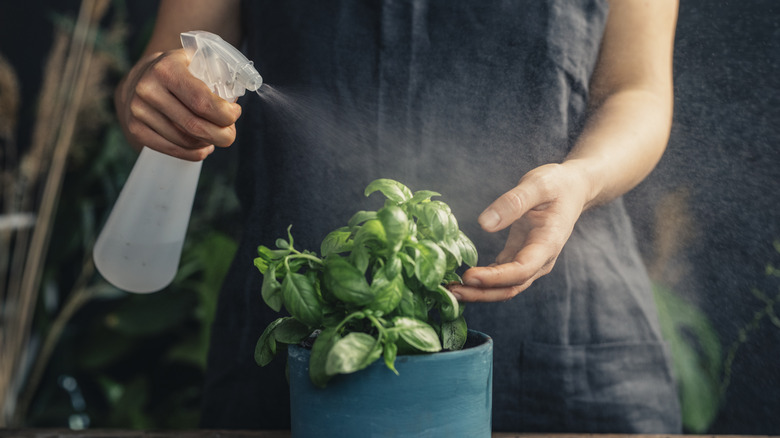It can be necessary to transplant your plants for varying reasons, including moving them outdoors when the weather warms up and putting them in a container that better suits their size. Transplanting is the process of moving a plant from one area to another. While this process is common, sometimes plants can die as a result of shock or the roots being damaged. To avoid this, Pinterest swears by one ingredient to keep your plants thriving during and after the transplantation process — hydrogen peroxide.
Though it’s often used for disinfection purposes, this bathroom cabinet staple can also make the transplantation journey more effective so you have a better chance of emerging with healthy plants on the other side. If they have been nestled comfortably within a soil patch or have been growing indoors, your plants could wither after being moved to a new location or container. You don’t want all of the work you have put into growing your plant buddy to go to waste, which is why the hydrogen peroxide hack to save your plants and garden seedlings from transplant shock is so useful.
Protect your plants from transplant shock

All you have to do is apply a small amount of hydrogen peroxide onto the roots of the plant before transplanting. You can do this with a cotton bud or a spray bottle, but make sure you don’t soak the roots as some plants don’t take well to being oversaturated with liquid. You might want to leave the plants for a few minutes to let the hydrogen peroxide do its job. Then move the plants as normal, ensuring you repot or replant properly to reduce the risk of transplant shock.
We don’t recommend using a concentration of hydrogen peroxide that’s higher than 3%. A concentration that’s too high could have adverse effects on your plant instead of beneficial ones. A low dose of hydrogen peroxide should not harm your plants. According to a 2024 paper published in Chemosphere, this hack works because the level of hydrogen peroxide already present in plants increases when the plant is stressed. Hydrogen peroxide works to reduce stress by boosting oxygen and helping the plant acclimate to environmental changes. Adding hydrogen peroxide while transplating could aid in this process. Overall, this surprising way to use hydrogen peroxide is simple, affordable, and could be the key to successful plant transplantation.

